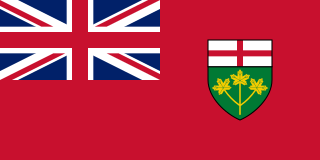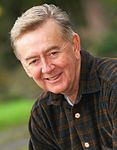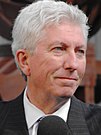| |||||||||||||||||||||||||||||||||||||||||||||||||||||||||||||||||||||||||||||||||||||||||
301 seats in the 36th Canadian Parliament 151 seats needed for a majority | |||||||||||||||||||||||||||||||||||||||||||||||||||||||||||||||||||||||||||||||||||||||||
|---|---|---|---|---|---|---|---|---|---|---|---|---|---|---|---|---|---|---|---|---|---|---|---|---|---|---|---|---|---|---|---|---|---|---|---|---|---|---|---|---|---|---|---|---|---|---|---|---|---|---|---|---|---|---|---|---|---|---|---|---|---|---|---|---|---|---|---|---|---|---|---|---|---|---|---|---|---|---|---|---|---|---|---|---|---|---|---|---|---|
| Turnout | 67.0% ( | ||||||||||||||||||||||||||||||||||||||||||||||||||||||||||||||||||||||||||||||||||||||||
| |||||||||||||||||||||||||||||||||||||||||||||||||||||||||||||||||||||||||||||||||||||||||
 Popular vote by province, with graphs indicating the number of seats won. As this is an FPTP election, seat totals are not determined by popular vote by province but instead via results by each riding. | |||||||||||||||||||||||||||||||||||||||||||||||||||||||||||||||||||||||||||||||||||||||||
| |||||||||||||||||||||||||||||||||||||||||||||||||||||||||||||||||||||||||||||||||||||||||
The Canadian federal election of 1997 was held on June 2 to elect members of the House of Commons of Canada of the 36th Parliament of Canada. Prime Minister Jean Chrétien's Liberal Party of Canada won a second majority government. The Reform Party of Canada replaced the Bloc Québécois as the Official Opposition.

The House of Commons of Canada is a component of the Parliament of Canada, along with the Sovereign and the Senate. The House of Commons currently meets in a temporary Commons chamber in the West Block of the parliament buildings on Parliament Hill in Ottawa, while the Centre Block, which houses the traditional Commons chamber, undergoes a ten-year renovation.

The 36th Canadian Parliament was in session from September 22, 1997, until October 22, 2000. The membership was set by the 1997 federal election on June 2, 1997, and it changed only somewhat due to resignations and by-elections until it was dissolved prior to the 2000 election.

The Prime Minister of Canada is the primary minister of the Crown, chairman of the Cabinet, and Canada's head of government. The current, and 23rd, Prime Minister of Canada is the Liberal Party's Justin Trudeau, following the 2015 Canadian federal election. Canadian prime ministers are styled as The Right Honourable, a privilege maintained for life.
Contents
- Campaign
- Political Parties
- Liberal Party
- Reform Party
- Bloc Québécois
- New Democratic Party
- Progressive Conservative Party
- Green Party
- Results
- Vote and seat summaries
- Results by province
- Notes
- 10 closest ridings
- See also
- References
- External links
The election results closely followed the pattern of the 1993 election. The Liberals swept Ontario, while a divided Bloc won a reduced majority in Quebec. Reform made sufficient gains in the West to allow Preston Manning to become Leader of the Official Opposition, but lost its only seat east of Manitoba. The most significant change was major gains in Atlantic Canada by the New Democratic Party (NDP) and the Progressive Conservative Party of Canada. The Liberals faced major losses, including two cabinet ministers; David Dingwall, Minister of Public Works from Nova Scotia, and Doug Young, Minister of National Defence from New Brunswick, both of whom lost to NDP candidates.

Ontario is one of the 13 provinces and territories of Canada and is located in east-central Canada. It is Canada's most populous province accounting for 38.3 percent of the country's population, and is the second-largest province in total area. Ontario is fourth-largest jurisdiction in total area when the territories of the Northwest Territories and Nunavut are included. It is home to the nation's capital city, Ottawa, and the nation's most populous city, Toronto, which is also Ontario's provincial capital.

Quebec is one of the thirteen provinces and territories of Canada. It is bordered to the west by the province of Ontario and the bodies of water James Bay and Hudson Bay; to the north by Hudson Strait and Ungava Bay; to the east by the Gulf of Saint Lawrence and the province of Newfoundland and Labrador; and to the south by the province of New Brunswick and the U.S. states of Maine, New Hampshire, Vermont, and New York. It also shares maritime borders with Nunavut, Prince Edward Island, and Nova Scotia. Quebec is Canada's largest province by area and its second-largest administrative division; only the territory of Nunavut is larger. It is historically and politically considered to be part of Central Canada.
The Liberals' victory was not in doubt, though some commentators on election night were predicting that they would be cut down to a minority government, and that Chrétien might lose his seat. Chrétien narrowly won his riding, and the Liberals maintained a four-seat majority thanks to gains in Quebec at the expense of the Bloc. Jean Charest's Tories and Alexa McDonough's NDP both regained official party status in the House of Commons.
A minority government, or minority cabinet or minority parliament, is a cabinet formed in a parliamentary system when a political party or coalition of parties does not have a majority of overall seats in the parliament. It is sworn into office, with or without the formal support of other parties, to enable a government to be formed. Under such a government, legislation can only be passed with the support of enough other members of the legislature to provide a majority, encouraging multi-partisanship. In bicameral parliaments, the term relates to the situation in chamber whose confidence is considered most crucial to the continuance in office of the government.

Jean Charest, is a Quebec politician. He was the 29th premier of Quebec, from 2003 to 2012; the deputy prime minister of Canada from June 25, 1993, until November 4, 1993; the leader of the federal Progressive Conservative Party of Canada from 1993 to 1998; and the leader of the Quebec Liberal Party from 1998 to 2012. He became Premier after winning the 2003 election; after he lost the 2012 election he announced that he would be resigning as Quebec Liberal Leader and leaving politics. Charest sits as an advisor to Canada's Ecofiscal Commission.

Alexa Ann McDonough, is a Canadian politician who became the first woman to lead a major, recognized political party in Canada, when she was elected the Nova Scotia New Democratic Party's (NSNDP) leader in 1980. She served as a member of the Nova Scotia Legislature from 1981 to 1994, representing the Halifax Chebucto and Halifax Fairview electoral districts. She stepped down as the NSNDP's leader and as a member of the legislature in 1994. She subsequently ran for, and was elected, leader of the federal New Democratic Party (NDP) in 1995. McDonough was elected the Member of Parliament (MP) for the federal electoral district of Halifax in 1997. She stepped down as party leader in 2003, but continued to serve as an MP for two more terms, until 2008, when she retired from politics altogether. In 2009, she became the interim president of Mount Saint Vincent University and was appointed an Officer of the Order of Canada in December of that year.
A change of 718 votes in just five ridings (Bonavista—Trinity—Conception, Simcoe—Grey, Humber—St. Barbe—Baie Verte, Cardigan, and Bellechasse—Etchemins—Montmagny—L'Islet) from the Liberals to the second place candidate would have resulted in a minority government.
This was the first time that five political parties held official party status in a single session of Canada's Parliament. Voter turnout was 67.0%, generally low at the time for Canadian elections. [1]

















